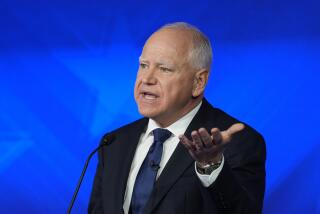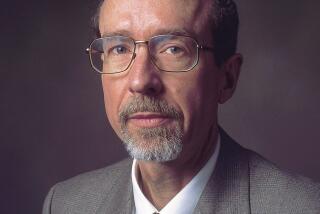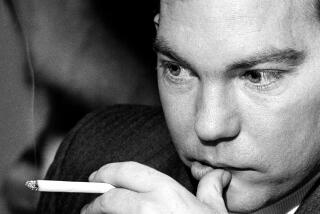COLUMN LEFT : A Myth That Lets Butchers Off the Hook : The massacre was not in Tian An Men Square. Insisting it was gives officials a smoke screen.
- Share via
Catch phrases have become the bane of our political culture. “Just say no,” “read my lips,” “the end of history”: by oversimplifying reality, they cloud our ability to grasp issues in their true depth. How sad to have to add “massacre in Tian An Men Square” to the list.
The anniversary of the Beijing slaughter of June 3-4 is now behind us. The Bush-Gorbachev summit edged it off the front pages, but there was still a healthy stream of commemorative rallies, TV specials and newsmagazine retrospectives. All of them, with only minor variations of syntax, paid tribute to the students who fell a year ago in “the massacre in Tian An Men Square.”
But that is not where the real carnage took place. Amnesty International and Asia Watch both agree that the principal killing grounds were some distance away, on Changan Avenue and Fuxingmen Boulevard, starting five miles out and peaking at the Muxidi intersection.
Part of the problem is how the story was reported at the time. Although hundreds of journalists were in Beijing that night, only a handful stayed in Tian An Men Square. In the absence of reliable eyewitness accounts, we were soon reading lurid tales--later shown to be spurious--of students being machine-gunned and run down by tanks in the heart of the square. Like Tom Hayden, writing in the Los Angeles Times a year ago, we came to believe that the Chinese government had done “the equivalent of executing the graduating classes at America’s top universities.”
Robin Munro of Asia Watch, who has observed the pro-democracy movement since the late 1970s, remained in the square all night and saw it peacefully evacuated by the students at dawn. He estimates that “several dozen died in the immediate environs of the square and a few in the square itself.” The great majority died elsewhere.
Why does the distinction matter so much? Isn’t this just splitting hairs? And won’t it lend credence to the pernicious revisionist history, now gathering steam in some quarters, that says there was no massacre at all?
Some American parallels may help answer the charge of geographical nit-picking. A “Times Square massacre” in New York, for example, would actually have taken place somewhere between the Brooklyn Bridge and Greenwich Village; a Washington “White House massacre” between Arlington and the Pentagon; a Los Angeles “Civic Center massacre” between USC and Dodger Stadium.
This casual abuse of geography in the service of myth-making is nothing new. Teddy Roosevelt’s legendary charge up San Juan Hill in 1898 is a good example. As in Beijing, few reporters were on the spot to see that T.R.’s Rough Riders did not in fact charge up San Juan Hill at all, but up a small nearby rise called Kettle Hill. But, as Roosevelt biographer David McCullough comments, “San Juan Hill sounded like a better name, a more Spanish name, a more romantic and exotic name to the people who were covering that event.”
In the end, this argument is about much more than geography. Tian An Men Square, in our imagination, means the student demonstrators who were encamped there. The students’ bravery and idealism were undeniable, but relatively few of them died on the night of June 3-4. Most of the 1,000 or so cut down by gunfire and crushed by armored vehicles were workers and ordinary Beijing residents. These were people who did not speak English, could not quote Patrick Henry and built no replicas of the Statue of Liberty. They were also the people who terrified Deng Xiaoping.
Under Deng, students have had certain modest privileges. As last year’s crackdown began, the Chinese Communist Party spoke of having a “tolerant, restrained attitude” to what it called “the emotionally excited young students.”
But once the signs appeared of organized working-class protest--”the Polish disease,” Deng and his cohorts call it--the party decided on an exemplary display of terror that would silence mass dissent for a generation. That was why the army killed as it did, whom it did and where it did.
As long as we substitute myth for fact, the butchers of Beijing will wriggle off the hook. When Barbara Walters, on ABC’s “20/20,” asked party general secretary Jiang Zemin about “the massacre in Tian An Men Square,” he replied, with a sly use of the English idiom, that it was “much ado about nothing.” But what if Walters had asked Jiang about the slaughter of workers at Muxidi?
More to Read
Sign up for Essential California
The most important California stories and recommendations in your inbox every morning.
You may occasionally receive promotional content from the Los Angeles Times.











